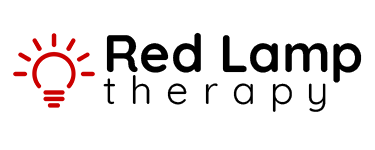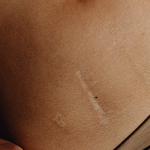Benefits of Red Light Therapy
Red light therapy (RLT) has emerged as a revolutionary treatment modality, leveraging the therapeutic effects of low-level wavelengths of red light to address a plethora of health and cosmetic issues. This non-invasive therapy promises a host of benefits, from enhancing skin health to promoting wound healing, without the side effects associated with more invasive procedures. Below, we explore eight scientifically backed benefits of red light therapy, each supported by a visual representation to enhance understanding.
Summary
Red light therapy presents a versatile and effective solution for a wide range of health and wellness concerns. Its ability to enhance skin health, promote wound healing, alleviate pain, and support mental well-being, among other benefits, makes it a valuable tool in the therapeutic arsenal. With ongoing research and technological advancements, the potential applications of RLT continue to expand, offering hope and healing to individuals seeking non-invasive treatment options.
While red light therapy offers numerous advantages, it’s important for individuals to consult with healthcare professionals before starting treatment, ensuring it’s the right choice for their specific health needs and conditions.

 Red light therapy is renowned for its ability to rejuvenate the skin, reducing signs of aging such as wrinkles, fine lines, and dark spots. It works by stimulating collagen production, essential for maintaining the skin’s elasticity and firmness. Studies have shown that regular RLT treatments can lead to significant improvements in skin complexion and texture, offering a natural alternative to chemical treatments and invasive procedures.
Red light therapy is renowned for its ability to rejuvenate the skin, reducing signs of aging such as wrinkles, fine lines, and dark spots. It works by stimulating collagen production, essential for maintaining the skin’s elasticity and firmness. Studies have shown that regular RLT treatments can lead to significant improvements in skin complexion and texture, offering a natural alternative to chemical treatments and invasive procedures. RLT accelerates the body’s natural healing processes, making it an effective treatment for wounds and injuries. By enhancing cellular repair and regeneration, red light therapy can reduce recovery time for wounds, cuts, and even surgical incisions. Research has documented its ability to improve wound healing, reduce inflammation, and decrease pain in affected areas.
RLT accelerates the body’s natural healing processes, making it an effective treatment for wounds and injuries. By enhancing cellular repair and regeneration, red light therapy can reduce recovery time for wounds, cuts, and even surgical incisions. Research has documented its ability to improve wound healing, reduce inflammation, and decrease pain in affected areas. One of the most valued benefits of red light therapy is its ability to alleviate pain and reduce inflammation. It’s particularly beneficial for conditions like arthritis, back pain, and muscle aches. RLT works by decreasing inflammation markers and increasing circulation, thereby reducing pain and enhancing mobility for many individuals.
One of the most valued benefits of red light therapy is its ability to alleviate pain and reduce inflammation. It’s particularly beneficial for conditions like arthritis, back pain, and muscle aches. RLT works by decreasing inflammation markers and increasing circulation, thereby reducing pain and enhancing mobility for many individuals. Emerging evidence suggests that RLT can have a positive impact on mental health, particularly in managing symptoms of depression and anxiety. The therapy is thought to affect brain function through its influence on mitochondria, potentially improving mood and energy levels.
Emerging evidence suggests that RLT can have a positive impact on mental health, particularly in managing symptoms of depression and anxiety. The therapy is thought to affect brain function through its influence on mitochondria, potentially improving mood and energy levels. For those struggling with hair loss, red light therapy offers a glimmer of hope. It stimulates the hair follicles, promoting growth and preventing further hair loss. Clinical studies have confirmed the efficacy of RLT in treating conditions like androgenetic alopecia, showcasing significant improvements in hair density and strength.
For those struggling with hair loss, red light therapy offers a glimmer of hope. It stimulates the hair follicles, promoting growth and preventing further hair loss. Clinical studies have confirmed the efficacy of RLT in treating conditions like androgenetic alopecia, showcasing significant improvements in hair density and strength. Athletes and fitness enthusiasts may find red light therapy particularly beneficial for enhancing performance and recovery. RLT has been shown to reduce muscle fatigue, improve muscle recovery, and increase physical performance. This is attributed to its ability to reduce oxidative stress and enhance cellular energy production.
Athletes and fitness enthusiasts may find red light therapy particularly beneficial for enhancing performance and recovery. RLT has been shown to reduce muscle fatigue, improve muscle recovery, and increase physical performance. This is attributed to its ability to reduce oxidative stress and enhance cellular energy production. Red light therapy’s anti-inflammatory effects extend to joint health, offering relief to those suffering from joint-related conditions like rheumatoid arthritis and osteoarthritis. By reducing inflammation and pain, RLT can improve joint mobility and quality of life for many individuals.
Red light therapy’s anti-inflammatory effects extend to joint health, offering relief to those suffering from joint-related conditions like rheumatoid arthritis and osteoarthritis. By reducing inflammation and pain, RLT can improve joint mobility and quality of life for many individuals. RLT can positively impact sleep by regulating circadian rhythms and reducing stress. Exposure to red light, especially in the evening, has been shown to increase melatonin production, helping individuals fall asleep more easily and enjoy a more restful night’s sleep.
RLT can positively impact sleep by regulating circadian rhythms and reducing stress. Exposure to red light, especially in the evening, has been shown to increase melatonin production, helping individuals fall asleep more easily and enjoy a more restful night’s sleep.
